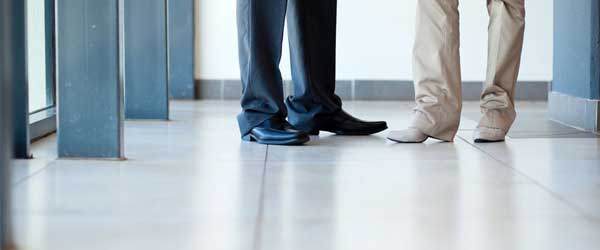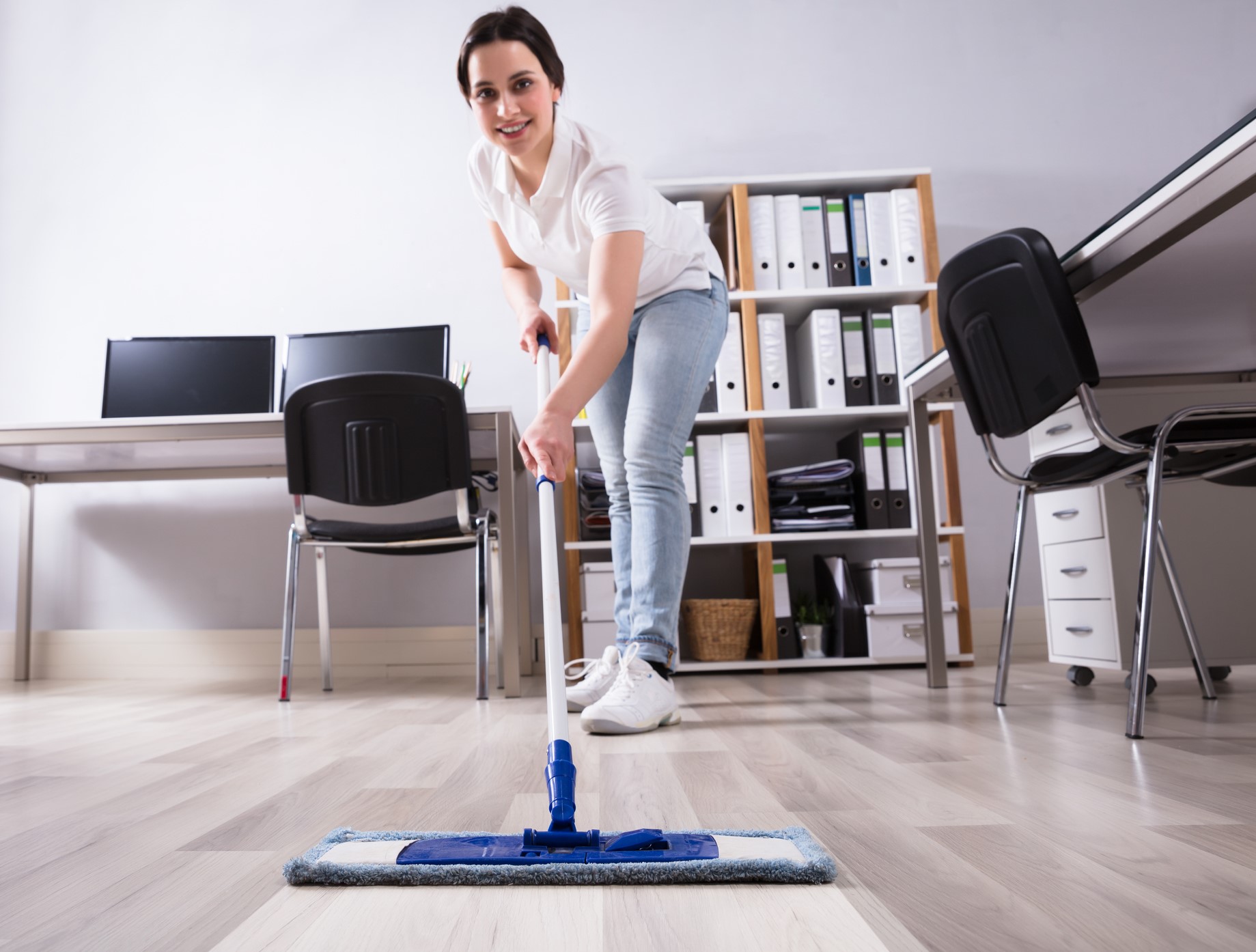When you are in the market for a new floor machine—or any other type of cleaning equipment—stop the rote buying and check out alternative systems.
There are literally billions of square feet of hard surface flooring in North America and much of it does need to be maintained in traditional ways: stripping, finishing, and buffing. However, when it comes to hard surface floors, two things are evolving:
- Many managers are deciding not to put a finish on their floors, usually for cost and environmental reasons.
- New vinyl flooring technologies are being introduced that do not need to be finished. These floors are designed to look just like wood, marble, and even traditional vinyl floors. Expect to see more of these floors installed in years to come.
Quick question: when you think of polishing floors to a high gloss shine, what kind of floor machine do you think of? If it’s a rotary pad machine, you guessed right. But if you are looking for a machine that may be able to produce an even higher gloss shine—a piece of equipment that users say is much easier to use, lighter, and more flexible—than I suggest you read further.
While they have definitely found their niche in the professional cleaning industry, with several manufacturers making machines featuring this technology, cylindrical brush floor machines (also known as cylindrical brush technology) are still only marginally known when compared to rotary systems. It’s similar to purchasing a vacuum cleaner, when most cleaning professionals think first (and usually only) of selecting an upright vacuum. But did you know that in Europe and Asia, canister vacuum cleaners are usually the first choice of cleaning workers and uprights are rarely used?
Over decades, cleaning professionals have become accustomed to using certain technologies, but in my opinion we need to break this cleaning equipment buying habit. There may just be a more effective equipment option waiting for you to discover it and, according to the study below, this very well may be true for cylindrical brush floor machines.
About 10 years ago, the American Institute of Cleaning Sciences (AICS) conducted a study comparing the gloss results of two different floor machines: one was a 20-inch, 175-275 rpm rotary machine and the other was an 18-inch twin cylindrical brush machine; many cylindrical brush floor machines are designed with two twin counter-rotating brushes. For the most part, these machines are comparable and designed to polish similar types of hard surface floors where a conventional finish—one designed for buffing with a low-speed machine—has been applied.
The test was conducted in a K-6 elementary school with 300 students. The floor was a commercial terrazzo floor that had been finished with a high-speed, 25% solids finish made with no ingredients that would cause it to yellow, distort, or discolor. The high-speed finish was designed to be polished using a 2,000 rpm burnisher, but it could also be polished using a low-speed floor machine.
The floor had been stripped and refinished 60 days before the evaluation and six thin coats of floor finish were applied. It was decided to wait 60 days before conducting the test to allow the finish to harden and “cure.” During the 60-day period, the floor was damp mopped regularly using a neutral floor cleaner and a 24-ounce mop. Additionally, once per week, the floor was cleaned using an automatic scrubber, again with a neutral floor cleaner; this was followed by burnishing.
How the Test Was Conducted
Now that we have all the key points covered about the test floor and how it was maintained, we can now dive right into how the test was conducted. The school was located in the Midwest and the tests were conducted in the month of September. It is important to know that because at that time of year in this region, temperature and climate conditions are very mild. Floor care can be impacted by very cold and very hot weather as well as very humid conditions.
The researchers divided a floor area into two equal 10-foot parts. The floors were scrubbed clean using the two different types of machines mentioned earlier. This was followed by vacuuming the floor with a backpack to collect any dust that may have accumulated, and then the floor was mopped using a neutral floor cleaner. After drying, the gloss test began.
A high quality gloss meter was used to measure the gloss at three different measuring angles and from an expanded area. The first test established a benchmark. The floor where the cylindrical brush machine was used had a gloss reading of 77; the floor where the rotary machine was used had a gloss reading of 78. The higher the reading, the more gloss.
The floor was then cleaned and gloss tested five times. Below are the results:
First Scrub
- Cylindrical: 79
- Rotary: 74
Second Scrub
- Cylindrical: 79
- Rotary: 73
Third Scrub
- Cylindrical: 80
- Rotary: 71
Fourth Scrub
- Cylindrical: 79
- Rotary: 71
Fifth Scrub
- Cylindrical: 77
- Rotary: 69
Average Gloss Readings
- Cylindrical: 78.8
- Rotary: 71.6
As you can see, the numbers speak for themselves. The study concluded that “these scientific findings demonstrate that the gloss units obtained by the twin cylindrical brush [machine] are 5 to 9 degrees higher [meaning glossier] than a conventional floor machine with a cleaning pad.”
Do these results suggest your next floor machine should be a cylindrical brush machine? As a manufacturer of both cylindrical brush and rotary floor machines, I’m going to have to let you make that decision. However, here is some closing advice: when you are in the market for a new floor machine—or any other type of cleaning equipment—stop the rote buying and check out alternative systems. You just might be in for a surprise.
Sean Martschinke, a CIMS ISSA Certification Expert (I.C.E.), currently serves as the marketing manager for Tornado Industries, a manufacturer of professional floor care and other cleaning tools and equipment.






